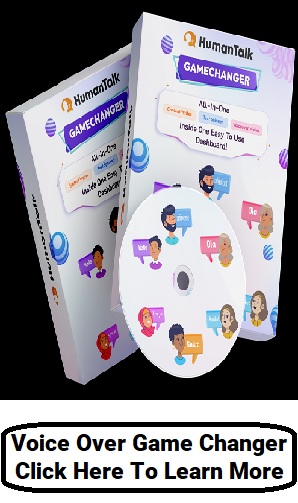Understanding Voice Over Accessibility
Voice over accessibility, often referred to as audio description or descriptive audio, involves the provision of supplementary auditory narration to describe essential visual elements of a video, film, television show, or live performance. This narration enables individuals with visual impairments or other disabilities to access and enjoy content that would otherwise be inaccessible to them.
Key Components of Voice Over Accessibility:
-
Descriptive Narration: A voice actor provides a verbal description of important visual elements, including scenes, actions, characters, and on-screen text.
-
Clarity and Consistency: The narration is clear, concise, and consistent with the pace of the content, ensuring that it does not disrupt the viewing experience for anyone.
-
Non-Intrusiveness: The voice over narration is carefully timed to avoid overlapping with dialogue or crucial audio elements, ensuring that it complements the content without being distracting.
-
Contextual Relevance: The description is provided at relevant points in the content, providing context and enhancing understanding.
-
Audio Descriptive Guidelines: Voice actors and content creators often follow established guidelines and standards for audio description to ensure quality and consistency.
The Impact of Voice Over Accessibility
-
Inclusivity: Voice over accessibility allows individuals with visual impairments to access a wide range of content, promoting inclusivity and equal access to information and entertainment.
-
Independence: Accessible content empowers individuals to consume media independently without the need for assistance from others.
-
Enhanced Learning: In educational content, voice over accessibility aids students with disabilities in understanding and retaining information.
-
Legal Compliance: Many countries have legislation and regulations in place that require accessibility features, including voice over, for certain types of content.
-
Broadened Audience: By incorporating accessibility features, content creators can reach a broader audience, including individuals with disabilities.
Creating Accessible Content
-
Plan Ahead: Consider voice over accessibility from the inception of a project, ensuring that it's an integral part of the content creation process.
-
Choose Qualified Voice Actors: Select voice actors with experience in providing descriptive audio to ensure clarity and professionalism.
-
Follow Accessibility Standards: Familiarize yourself with accessibility guidelines and standards, such as those outlined in the Web Content Accessibility Guidelines (WCAG).
-
Testing and Feedback: Test your accessible content with individuals who have disabilities and gather feedback to make improvements.
-
Promote Awareness: Educate your team and stakeholders about the importance of accessibility and the impact it has on the audience.
Voice over accessibility is a vital aspect of content creation that enables individuals with disabilities to enjoy audio and visual content independently. By incorporating descriptive narration, content creators can make their work more inclusive and reach a broader audience. Embracing accessibility is not only a matter of compliance with legal requirements but also a commitment to equal access and inclusivity for all. As technology and awareness continue to grow, voice over accessibility will play an increasingly significant role in ensuring that content is truly for everyone.
- Behind the Mic: A Day in the Life of a Voice Over Artist
- Diversity and Inclusion in Voice Over: The Changing Landscape
- Interactive Voice Over: Engaging Audiences in New Ways
- Mastering Character Voice Overs for Animation and Video Game
- The Art of Voice Over Casting: Finding the Perfect Voice
- The Future of Voice Over: Predictions for the Next Decade
- The Globalization of Voice Over: Opportunities and Challenges
- The Power of Voice: How to Make Your Brand Memorable with Voice Overs
- The Psychology of Voice Overs: How Tone and Pitch Influence Perception
- The Rise of AI in Voice Over: How Technology Is Changing the Game
- Voice Over Accessibility: Making Content Inclusive for All
- Voice Over in Social Media Marketing: Capturing Attention in Seconds
- Voice Over Rates and Pricing: What You Need to Know
- Voice Over Trends to Watch in 2023
- Voice Over vs. Narration: Understanding the Differences

